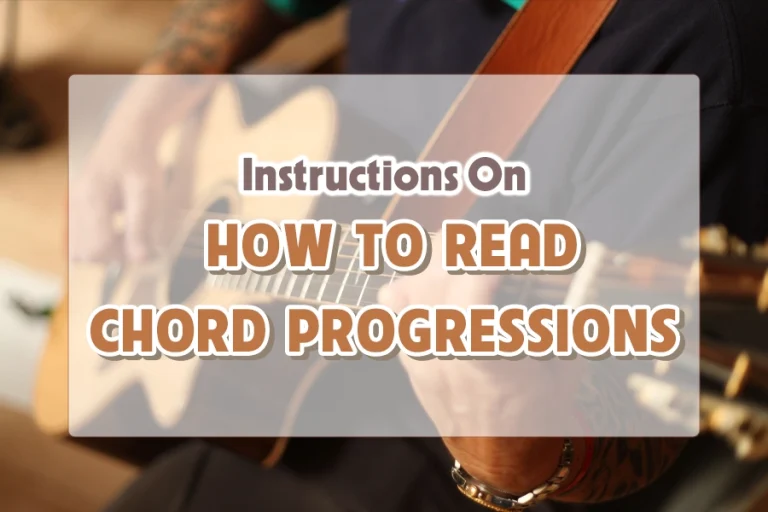Palm muting is indeed one of the essential techniques for any electric guitar player. Being a super versatile technique that is useful across a wide range of genres, from rock and metal to acoustic music, it adds a dynamic control and a cool percussive vibe to your playing.
If you’re just starting out, getting the hang of palm muting can feel a bit tricky. It’s all about that sweet spot—applying just the right amount of pressure and finding the perfect place on the strings for your palm to rest. The goal is to get that awesome muted sound without squashing your notes or making them losing clarity.
Let’s learn more about the power of these palm muted notes and how to get them on your electric guitar.
How To Palm Mute An Electric Guitar: Basics of Palm Muting
Palm muting is a popular electric guitar method for creating a muted, rhythmic sound like rock and metal. Palm mute notes are common in rock and metal.
You must stay balanced when palm silent. Palm muting involves placing your picking hand’s palm on the strings at the bridge to create a muted, percussive sound.
Use a part of your hand (we’ll explain) to lightly touch the strings where they meet the guitar bridge. This touching mutes the strings, creating a percussive, somewhat tonal sound.
Let’s discuss about your palm edge. Hold out your picking hand and create a little fist to see the side near your thumb. Muting will occur here. The edge that’s practically straight from your wrist to your thumb is it, not the fleshy section.
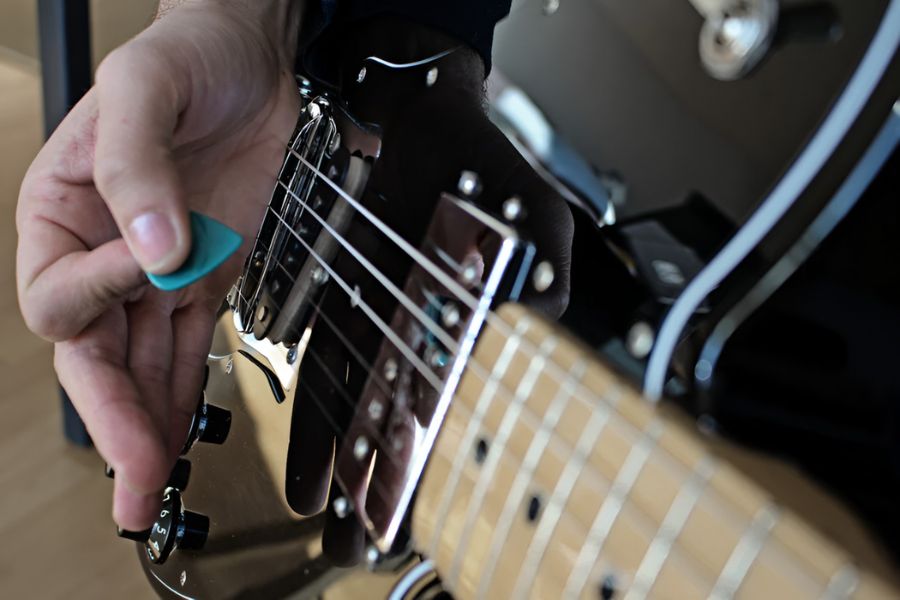
When holding your guitar comfortably, your picking hand strikes the strings at an angle and falls over the bridge. This lets you roll it to mute and unmute without lifting your hand.
Start by muting and playing one string. Practice a scale or melody with consistent pressure and sound. Iterate on each string to master the technique.
Practice till you find your palm mute sweet spot. Change your palm muting pressure to produce crescendos and decrescendos in those tracks.
Palm muting can highlight beats in a measure. Muting less on beats you wish to accentuate and more on others creates a rhythmic push and pull that makes your playing even more groove-heavy.
How Equipment and Set Up Affect Palm Muting?
Let’s explore how palm mute effects can vary based on several factors of an electric guitar such as the specific type of guitar and how the muted notes sound with other go together items. Knowing this, you can make your palm-muted notes resonate with clarity and punch.
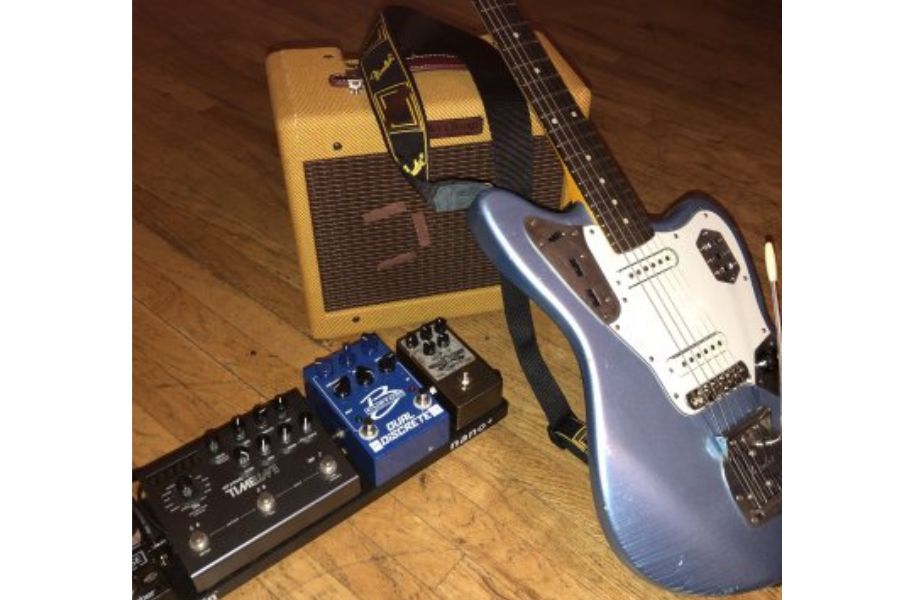
Types of Electric Guitars
When we look at electric guitars, it’s not just about the shape or color; it’s about how they resonate with our playing style, especially with techniques like palm muting. Different guitars can produce remarkably different sounds, even with the same technique. For palm muting, the guitar’s body type (solid, semi-hollow, or hollow), pickup configuration (single-coil vs. humbucker), and the string action (distance between the strings and the fretboard) play significant roles.
- Solid-body guitars are your best friend for tight, aggressive palm muting. They offer a solid foundation that ensures your muted notes are crisp and precise.
- Humbucker pickups tend to be more forgiving and responsive for palm muting, giving you a warmer, fuller sound. On the other hand, single-coils can also be great but expect a brighter, more defined tone.
- Adjusting your electric guitar’s string action is delicate and can affect playability and palm muting. String action should be comfortable for you. Lower action can make palm muting easier, but be wary of buzzing if it’s too low.
Also, strings and picks can dramatically change the texture and feel of your palm-muted sections. Heavier gauge strings can give you a thicker, more powerful muted sound. But find a balance that suits your overall playing style, you don’t want to sacrifice playability for the sake of one technique. For picks, thicker ones generally give more control and a stronger attack, palm muting like this.
It would be best if you experimented to find the muting level suitable for your specific electric guitar. Start with light pressure and gradually increase until you find the sweet spot where the strings are muted without killing the sustain totally.
Electric guitars typically have lighter gauge strings than their acoustic counterparts, for muting, you only need to apply less pressure.
It’s easy to tense up when trying something new, but keep your wrist and forearm relaxed. Tension will make it harder to control the muting and can tire you out quickly.
Amplifier and Effects Settings
Electric guitars are often played amplified. To make your palm-muted parts stand out, you can also adjust your amplifier and effects settings. The sound of palm muting will transform from a subtle thump into a growling punch.
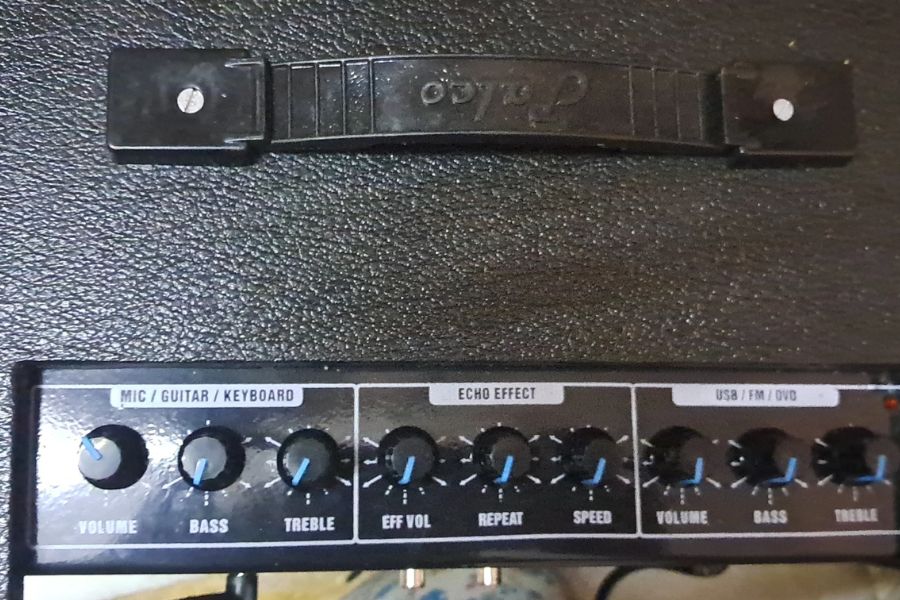
Gain/ Overdrive/ Distortion
Palm muting often sounds best with a bit of grit. Start with a moderate gain setting and adjust to taste. High-gain setting makes palm mutes more aggressive and pronounced, or too much gain can muddy up your sound, while too little might not give you the punch you want.
For electric guitar players, knowing about gain, overdrive, and distortion is very worthy. Distortion and overdrive pedals accentuate the percussive palm-muted notes. They change how your guitar sounds, especially with palm muting.
- Gain: Gain boosts your signal in amps or pedals. It makes the sound louder. More gain makes muted notes hit harder. But too much can blur them.
- Overdrive: Overdrive makes your amp sound like it’s working really hard. This gives a warm, gentle buzz. It makes muted notes feel deeper and warmer. It’s perfect for blues and rock.
- Distortion: Distortion changes your sound more than overdrive. It makes it rough and intense. Muted riffs get a gritty edge. It’s great for metal and hard rock.
In short: Gain turns up your volume. Overdrive and distortion color your sound. Overdrive is smooth. Distortion is edgy. When you palm mute, how you use these can make your muted notes clear, warm, or aggressive.
EQ Settings
Boosting the mid-range slightly can help your palm-muted notes cut through the mix, especially in a band setting. Be mindful of the bass and treble settings to avoid a sound that’s too boomy or too thin.
Compression
Compression is like auto volume control. It lowers loud sounds and boosts quiet ones.
This change is way faster than turning a knob by hand. When set right, it’s hard to notice. It enhances the sound without losing any part of it.
A touch of compression can help even out the dynamics of your palm-muted playing, ensuring that every note is heard clearly without overwhelming your overall sound. Dynamics in music are volume changes between notes or phrases. Guitar dynamics differentiate melodies, create emotional resonance, and animate music. They can tell if a song is repetitive or captivating and evocative.
Advanced Techniques and Variations
Now that you’ve got the the basic palm muting technique, let’s elevate your playing. These advanced palm muting techniques can make your playing even more dynamic and expressive.
Integrating Palm Muting with Strumming Patterns
Blend the Techniques:. Incorporate palm muting into a simple strumming pattern by gently resting the edge of your palm on the strings for certain strums. Blend muted and unmuted strums fluidly to create a varied sonic landscape within the same rhythm.
Try different strumming patterns, you can alternate between heavily muted sections and open strums. Adding a compelling rhythmic texture to your playing like this makes even the simplest chord progressions sound interesting.
Switching Between Palm-Muted and Open Notes Seamlessly
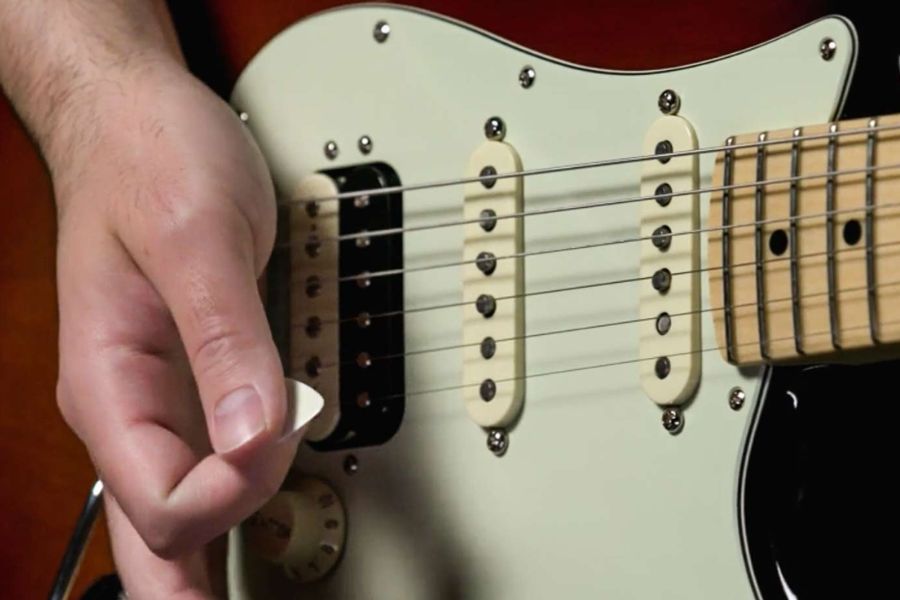
Another great technique is to switch between palm-muted and open notes. Doing this by practicing lifting your palm off the strings, just enough to let the notes ring out, then for the next muted note, quickly return to your muting position.
It’s important to be precise: pick a riff or melody and play it slowly. Pay attention to the movement of your palm and aim for a smooth, seamless transition between muted and open notes. As you get more comfortable, switch it faster.
Electric Guitar Soundtracks With Palm Muting
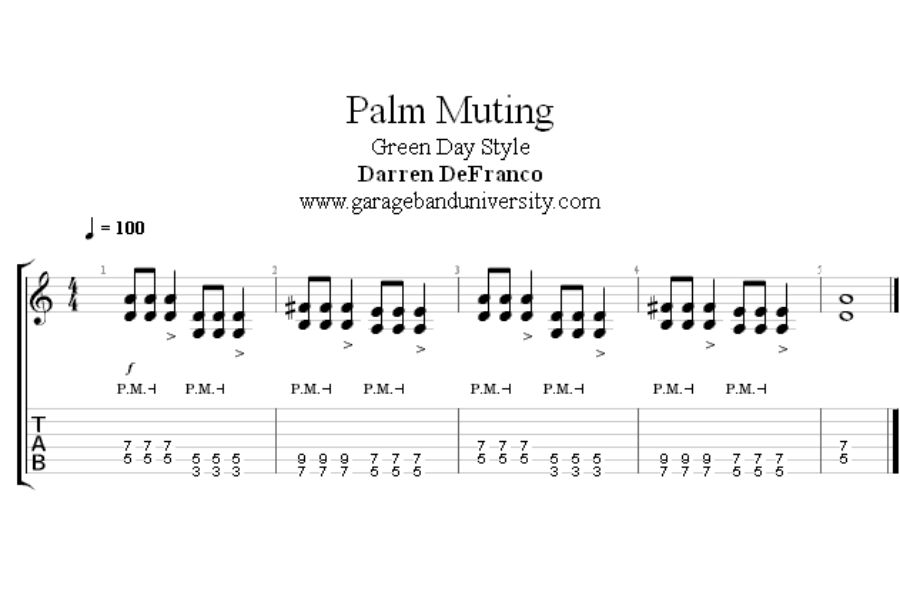
Some electric guitar recordings demonstrate palm muting’s magic. James Hetfield flawlessly switches between palm-muted riffs and open chords in “Enter Sandman” and “Master of Puppets.”
Next, Dave Mustaine. In “Symphony of Destruction” and “Holy Wars… The Punishment Due,” his precise palm muting complements Megadeth’s nuanced riffs.
Remember Eddie Van Halen! He uses palm muting, tapping, and other gimmicks in “Ain’t Talkin’ ‘Bout Love,” giving his playing a unique kick.
Grab your guitar and listen to these songs. Palm muting adds depth and character to guitar parts, making them pop.
Conclusion
Finally, there are many methods you can use on an electric guitar, but palm muting is one of the most important ones. Even though it seems simple at first, palm muting is necessary to unlock many advanced methods that give you an infinite number of variations and combinations. Electric guitarists who want to express themselves more and use their instruments to their fullest should learn palm muting as soon as possible.





